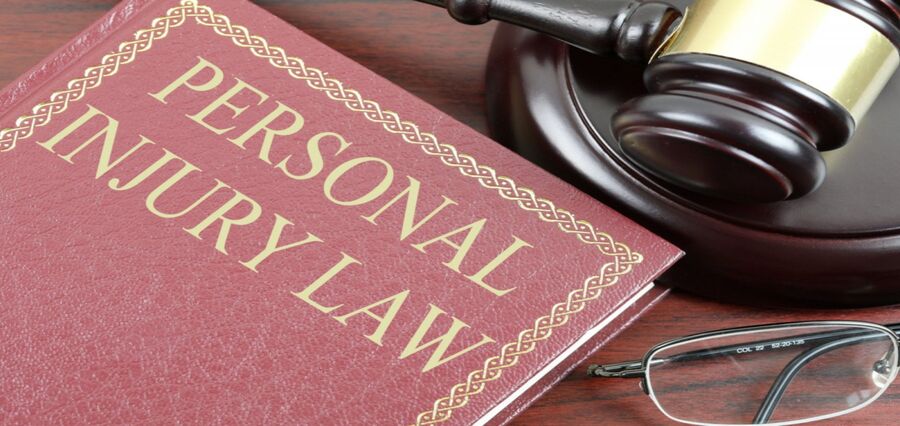Every year, millions of Americans find themselves embroiled in the complexities of a personal injury case. In 2019 alone, nearly 4.5 million people in the U.S. suffered injuries from motor vehicle crashes, a figure that doesn’t even touch on the myriad other injury sources.
For many, navigating the process of seeking justice becomes a pivotal moment in their recovery journey. Navigating the steps involved in personal injury cases can be daunting, but having a clear roadmap makes the journey more manageable.
Whether it’s a slip-and-fall at a local store or a mishap at the workplace, understanding the steps involved can make all the difference in securing a fair outcome. Visit www.parkchenaur.com to learn more about things you can do to secure fair compensation.
Step 1: Seeking Medical Attention
When you’re involved in an accident, your instinct might be to shrug it off, especially if the injury seems minor. However, seeking medical attention right away is crucial. Not only does it ensure your well-being, but it also creates an official record of your injuries.
These medical records serve as solid evidence in your personal injury case. Think of them as a paper trail showing the incident’s impact on your health. In the legal arena, well-documented injuries can significantly strengthen your position, ensuring you’re not left footing the bill for someone else’s negligence.
Step 2: Hiring a Personal Injury Attorney
Embarking on a personal injury journey without an attorney is like sailing stormy seas without a compass. An attorney provides guidance, ensuring you avoid legal jargon and take advantage of rightful compensation. They bring expertise and experience, understanding the nuances that can make or break your case.
Tips for choosing the right attorney:
- Research their track record: Look for a history of successful cases like yours.
- Check reviews and testimonials: What do past clients say about them?
- Consider their availability: You want an attorney who’s there when you need them.
- Assess their communication skills: Clear communication is essential for understanding your case’s progress.
Step 3: Investigation and Evidence Gathering
Before diving deep into a case, attorneys first evaluate its merits. They analyze the circumstances, identifying whether there’s a robust legal stand to pursue compensation. But solid arguments aren’t built on words alone.
Evidence is the bedrock of any successful personal injury case. It’s like piecing together a jigsaw puzzle, where photographs capture the scene, witness statements add context, and expert testimonies provide unbiased professional insights.
Together, these elements form a compelling narrative, showcasing the extent of the wrongdoing and its consequences, ensuring the scales of justice lean in your favor.
Step 4: Initiating a Claim
Once you’ve gathered your evidence and consulted an attorney, you must initiate the claim. But what does that mean? Well, you’ve got two routes: a formal lawsuit or an informal settlement. A lawsuit is a legal action taken in court, usually a more extended and public affair. An informal settlement is more of a behind-the-scenes negotiation.
Either way, the first formal step is to notify the defendant and their insurance company about your intentions. This sets the stage for everything that follows, so ensure it’s done promptly and professionally.
Step 5: Negotiation and Settlement
Surprisingly, the courtroom drama seen on TV rarely plays out in real life. Most personal injury cases are settled long before a judge bangs the gavel. This is where insurance companies come into the picture. They’re keen on paying quickly to minimize their financial loss, but quick only sometimes means fair. Your attorney’s role is to ensure you’re not shortchanged.
Factors influencing settlement amounts:
- The severity of the injury: More severe injuries often result in higher settlements.
- Medical expenses: The cost of medical care can significantly affect the settlement amount.
- Lost wages: If the injury forced you out of work, that lost income comes into play.
- Emotional distress: Non-tangible factors like emotional suffering can also be considered.
Step 6: Filing a Lawsuit
So you’ve tried negotiating, but you’re hitting a brick wall. When all else fails, it’s time to roll up your sleeves and initiate a formal lawsuit. This is when your attorney files a complaint in court, formally bringing charges against the defendant.
Understanding the timeline is vital. After filing, you enter the discovery phase, where both sides collect more evidence. Depending on the case’s complexity, this could take months or even years. Finally, if no settlement is reached, you proceed to trial, where a judge or jury decides the outcome.
Step 7: The Discovery Phase
The discovery phase isn’t about telescopes and new planets; it’s a legal term for digging deep into the facts. Both sides are like detectives, asking questions and gathering evidence during this stage.
You’ll encounter terms like interrogatories (written questions that require written answers), depositions (oral questioning recorded by a court reporter), and requests for documents. The importance of this phase can’t be overstated.
During discovery, you solidify your case, uncovering crucial details that may sway the outcome in your favor—or against you if you’re not careful.
Step 8: Mediation and Arbitration
Before leaping to a full-blown trial, alternative paths like mediation and arbitration exist. These methods aim to resolve disputes without a courtroom showdown.
Pros and Cons:
Mediation:
- Pros: More flexible, often faster, promotes mutual agreement.
- Cons: Non-binding, no guaranteed resolution.
Arbitration:
- Pros: Binding decision, more formal than mediation, faster than a trial.
- Cons: Limited appeal options may involve higher costs.
Step 9: Going to Trial
If you’ve reached this point, it’s time to prepare for court. Your attorney becomes your chief strategist, orchestrating the presentation of evidence and arguments. As the plaintiff, your role is to cooperate and provide honest testimony. The defendant and their legal team will do the same on the opposing side.
During the trial, expect a series of opening and closing statements, witness testimonies, and cross-examinations. Finally, the moment of truth: the outcome can range from a triumphant win to a disappointing loss, with awards varying from monetary compensation to nothing.
Step 10: Appeals
A trial’s outcome isn’t always the final word. If there’s a belief that a legal error was made, an appeal can be filed to have a higher court review the decision. This isn’t about re-trying the case, but ensuring justice is served correctly.
Conclusion
Personal injury cases are marathons, not sprints. Each step demands patience and unwavering persistence. It’s a journey that might feel daunting, yet it’s crucial to remember that seeking justice isn’t just about compensation; it’s about asserting your rights, drawing a line in the sand, and signaling that negligence or harm won’t be tolerated.
If you or someone you know has been injured, take heart. Understand your rights, be proactive, and never be afraid to stand up for justice. Your well-being and dignity are worth the fight.




